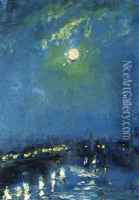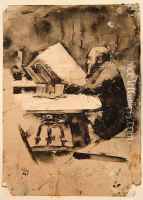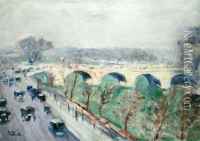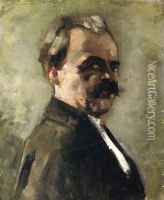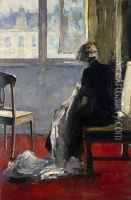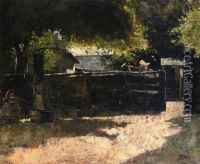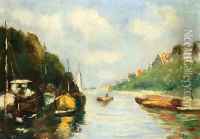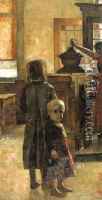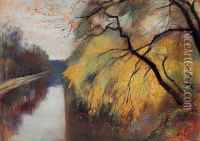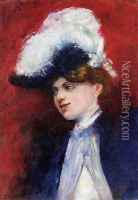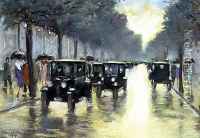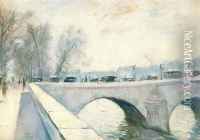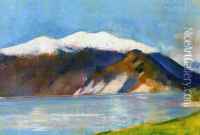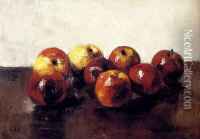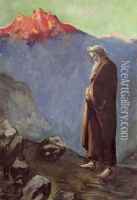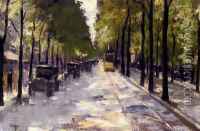Lesser Ury Paintings
Lesser Ury was a German painter and printmaker, and one of the most prominent figures of the Berlin Secession. Born on November 7, 1861, in Birnbaum, Province of Posen (then part of Prussia, now Międzychód, Poland), Ury showed an early interest in art, which led him to pursue studies at the Düsseldorf Academy and later in Brussels, Paris, and Italy. His early works were influenced by impressionism, but he is best known for his atmospheric scenes of Berlin, capturing the mood and lighting of the city's streets, cafes, and interiors.
Ury's work spans across several genres, including landscapes, portraits, and biblical scenes, but he is particularly celebrated for his ability to depict light and its effects. His Berlin street scenes, often featuring rainy evenings and the glow of street lamps, are considered some of his finest works, showcasing his mastery over mood and ambiance. Despite his talent, Ury struggled with recognition during the early part of his career, partly due to anti-Semitic attitudes prevalent at the time, which hindered his acceptance into certain art circles and exhibitions.
Throughout his life, Ury remained a solitary figure, dedicated to his art. He was eventually recognized for his contributions to German art and became a member of the Berlin Secession, an association of artists who sought to break away from the traditional academic art of the time. Ury's late works include a series of biblical paintings and etchings, reflecting his Jewish heritage and his interest in religious themes.
Lesser Ury passed away on October 18, 1931, in Berlin. Today, he is remembered as a key figure in the Berlin art scene of the late 19th and early 20th centuries, and his works are held in high regard, featured in museums and collections around the world. His legacy is that of an artist who captured the essence of urban life and the fleeting moments of everyday existence with sensitivity and a profound sense of beauty.
